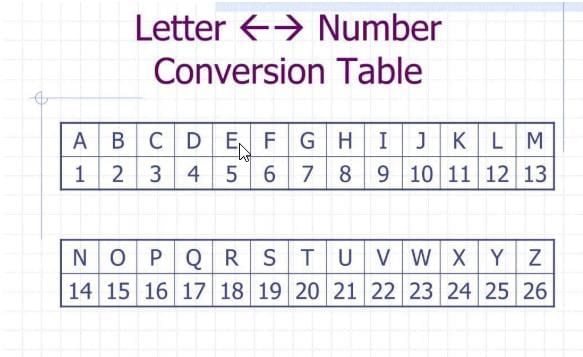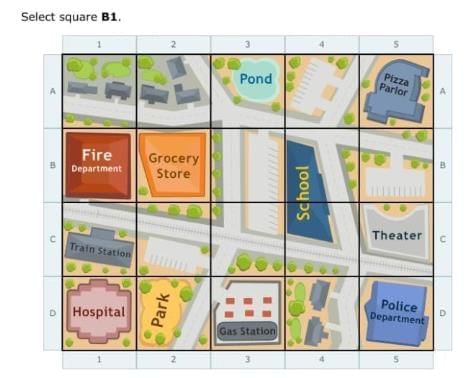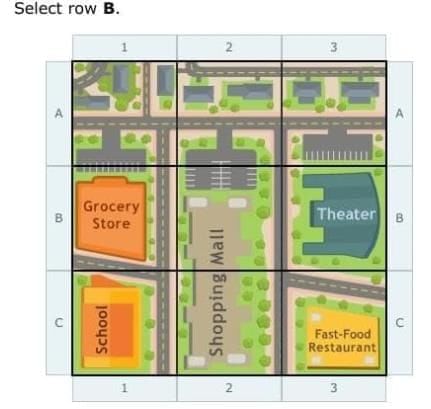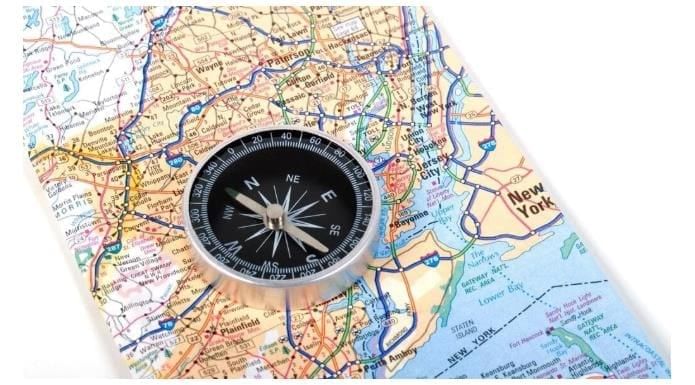Grade 3 Exam > Grade 3 Notes > Social Studies for Grade 3 > Chapter Notes: Read maps
Read maps Chapter Notes | Social Studies for Grade 3 PDF Download
| Table of contents |

|
| Introduction |

|
| Read a Letter-Number Grid |

|
| Use a Letter-Number Grid |

|
| Read a Map: Cardinal Directions |

|
Introduction
Maps are like special pictures that help us understand places! They show us where things are, like roads, rivers, or even your school. In this chapter, "Read Maps," you will learn how to use maps in fun and easy ways. We will explore how to read a letter-number grid, use it to find places, and understand cardinal directions like north, south, east, and west. These skills will make you a map expert, ready to find your way around!
Read a Letter-Number Grid

- A letter-number grid is a way to find places on a map.
- Maps have letters on one side, like A, B, C, and numbers on another side, like 1, 2, 3.
- Together, letters and numbers make a grid, like squares on a checkerboard.
- Each square on the map has a letter and a number, like A1 or B3.
- To find a place, look at the letter first, then the number.
- For example, if someone says "Find the park at C2," you look where row C and column 2 meet.
- The letter tells you which row to look at, and the number tells you which column.
- Letter-number grids help you find things like houses, schools, or parks quickly.
- Always check the map's grid carefully to make sure you find the right spot.

Practice by looking at a map and finding places using the letter-number grid.
Use a Letter-Number Grid

- Using a letter-number grid means finding or marking places on a map.
- First, find the letter of the row you need, like A or D.
- Next, find the number of the column, like 1 or 4.
- Follow the row and column until they meet at a square.
- That square is where the place is located, like a treasure on a map!
- You can also use the grid to tell someone else where something is.
- For example, if you see a lake at B3, you can say, "The lake is at B3."
- Make sure to look at the map’s key or legend to know what symbols mean.
- Using a letter-number grid makes it easy to share directions with friends!
Practice by finding different places, like a school or a store, using the grid.
Read a Map: Cardinal Directions

- Cardinal directions are the main directions: north, east, south, and west.
- North is usually at the top of a map.
- South is at the bottom of a map.
- East is on the right side of a map.
- West is on the left side of a map.
- Maps often have a compass rose to show these directions.
- A compass rose is a picture that points to north, east, south, and west.
- You can use cardinal directions to tell someone how to go somewhere.
- For example, "Walk north to find the park" means go toward the top of the map.
Practice by looking at a map and finding what is north, south, east, or west of a place.
The document Read maps Chapter Notes | Social Studies for Grade 3 is a part of the Grade 3 Course Social Studies for Grade 3.
All you need of Grade 3 at this link: Grade 3
FAQs on Read maps Chapter Notes - Social Studies for Grade 3
| 1. What is a Letter-Number Grid and how is it used in maps? |  |
Ans. A Letter-Number Grid is a tool used to locate specific areas on a map. It consists of letters along one edge and numbers along the other. Each box formed by the intersection of a letter and a number corresponds to a specific area or feature on the map, making it easier to find locations.
| 2. How do you read cardinal directions on a map? |  |
Ans. Cardinal directions are the four main points of a compass: North, South, East, and West. On a map, these directions are usually indicated by a compass rose. North is typically at the top, South at the bottom, East to the right, and West to the left. Understanding these directions helps in navigating and understanding the layout of the area depicted on the map.
| 3. Why is it important to understand how to read maps? |  |
Ans. Understanding how to read maps is important because it helps individuals navigate and interpret geographical information. It aids in locating places, understanding distances, and comprehending the relationships between different locations. This skill is essential for travel, education, and various professions.
| 4. What are some common symbols found on maps, and what do they represent? |  |
Ans. Common map symbols include icons for parks, schools, hospitals, and roads. Each symbol represents a specific feature or type of area. For example, a tree symbol often indicates a park, while a cross may represent a hospital. Understanding these symbols is crucial for effectively interpreting the information presented on a map.
| 5. How can maps help us in our daily lives? |  |
Ans. Maps help us in our daily lives by providing essential information for navigation, planning trips, and understanding our surroundings. They can be used for finding directions, exploring new areas, or even for educational purposes to learn about different regions and their characteristics. Maps enhance our spatial awareness and assist in making informed decisions about travel and location.
Related Searches














